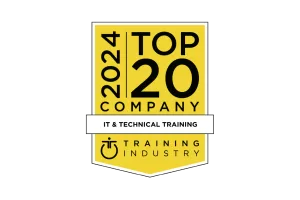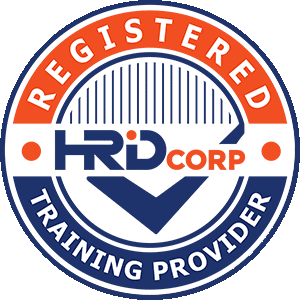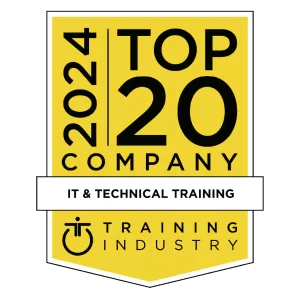This course will teach you how to use shell scripts and utilities for practical system administration of AIX (or other UNIX) operating systems.
-
This AN30G: Power Systems for AIX – PowerVM I Implementing Virtualization course provides an overview of the PowerVM edition’s features on POWER processor-based systems. It explains the new features and benefits of virtualization including processor virtualization, Virtual I/O Server, and virtual devices, such as virtual Ethernet, virtual SCSI, and virtual Fibre Channel adapters. Basic and advanced configurations of the Virtual I/O Server and its clients are discussed including various availability options.
Expand your knowledge about PowerVM features that were introduced in Power Systems for AIX I: LPAR Configuration and Planning (AN11G).
This course provides lectures and hands on labs in an instructor lead course environment, either in a face-to-face classroom or in a live virtual classroom environment (ILO – Instructor Led Online).
-
This course is designed to prepare students to install and configure a highly available cluster using PowerHA System Mirror.
-
Through brief lectures, exercises, and classroom discussion in this AOCMCDOT: ONTAP Administration of Active IQ Unified Manager course you discover how to deploy and maintain an ActiveIQ Unified Manager and pair it with OnCommand Workflow Automation (WFA) data-management solution. You learn how the performance-management features of Unified Manager provide a unified approach to storage management that reduces complexity. You also learn to how to extend Unified Manager’s data protection capabilities with WFA. This course can be delivered in a traditional classroom or a virtual classroom.
-
The APM: SAFe Agile Product Management course harnesses the power of Design Thinking to develop innovative solutions with proven SAFe capabilities to execute on those visions. Learn the right mindset, skills, and tools to create successful products—from inception to retirement—using Agile techniques. Recognize how Continuous Exploration fuels innovation and helps you define a vision, strategy, and roadmap to tap into new markets.
Find out how to accelerate the product life cycle to get fast feedback and quickly deliver exceptional products and solutions that delight customers—all while aligning with your organization’s strategy, portfolio, evolving architecture, and solution intent.
Attendees will recognize how Continuous Exploration fuels innovation and helps you define a vision, strategy, and roadmap to tap into new markets. Find out how to accelerate the product lifecycle to get fast feedback and quickly deliver exceptional products and solutions that delight customers – all while aligning with your organization’s strategy, portfolio, evolving architecture, and solution intent.
-
What is Agile? Why be Agile in your projects?
The future is unpredictable, and with the world and its technology changing ever faster, our projects experience far greater uncertainty on requirements ever than before. Projects that embrace Agile are able to adapt faster, deliver little and often yet remaining business and customer focused.
Based on the proven DSDM Agile Project Framework (AgilePF), the Agile Project Manager (AgilePM) manages Agile Projects in organizations requiring standards, rigour and visibility around Project Management, while at the same time enabling the fast pace, change and empowerment provided by Agile. The AgilePM balances robust governance with a collaborative culture that inspires innovation and improves competitive advantage.
AgilePM is the world’s leading certification in Agile Project Management, developed by the Agile Business Consortium and accredited by the examination institute APMG International. This APMG Agile Project Management course covers the certification examination for Foundation. Delegates who have attended the course are eligible for 21 PMI PDUs.
-
Over the 3 days in this hands-on APS-SD: Applying Professional Scrum for Software Development course, students gain a real-world view of what it is like to build software with Scrum. They collaborate over a series of Sprints applying modern engineering practices, and using the Scrum framework to manage complexity. The key focus of the class is on how to develop and deliver increments of releasable functionality. Students will experience real-world challenges and issues, and through a series of Sprints will learn how to continuously improve the way they perform their work.
This Professional Scrum Developer certification course teaches how Agile engineering practices and supportive DevOps tools complement Scrum and further advance a team’s capabilities and is available in .NET and Java specific technologies, along with a generic technology course. Professional Scrum Trainers can work with you to define a specific technology stack that meets your needs in private classes for your organization.
The course teaches how Agile engineering practices and supportive DevOps tools complement Scrum and further advance a team’s capabilities. This Agile developer course provides greatest value if the whole Scrum Team (Developers, Scrum Master and Product Owner) attend together and experience the power of real teamwork. Teams that attend together are not only able to apply learnings to their work immediately, but are also able to recall their classroom experiences to overcome particularly challenging times.
The course is available in Microsoft Visual Studio .NET and Java specific technologies, along with a generic technology course. Professional Scrum Trainers can work with you to define a specific technology stack that meets your needs in private classes for your organization.
-
In this two-days APS: Applying Professional Scrum class, students learn to apply Professional Scrum. They experience new, agile ways of working that enable teams to deliver more value, satisfy stakeholders and work better together. Students work together as a team in a series of Sprints to solve complex problems, facing similar challenges that they face outside of class and learning how to use Scrum to address them.
These Sprints enable students to see the practical application of Scrum and to understand the value of an Agile mindset. Additionally, these Sprints expose common missteps and misunderstandings often seen while using Scrum, allowing students to develop an awareness of the associated symptoms and how to correct them. Students not only learn Scrum; they learn how to use Scrum well.
-
ArchiMate, The Open Group Standard, is an open and independent modeling language for enterprise architecture that is supported by different tool vendors and consulting firms.
ArchiMate® provides instruments to enable enterprise architects to describe, analyse and visualise the relationships among business domains in an unambiguous way.
Upon completion, participant can enroll in the following certification exam:
- ArchiMate 3 Foundation
The purpose of this certification is to provide validation that the participant has gained knowledge of the notation, terminology, structure and concepts
of theArchiMate® modeling language. The learning objectives at this level focus on knowledge and comprehension. - ArchiMate® 3 Practitioner
The purpose of this certification is to provide validation that the participant has gained knowledge as in Level 1 and has the capability to use the ArchiMate® language for modeling.
- ArchiMate 3 Foundation
-
This introductory course enables a new system operator to develop basic to intermediate level skills needed for day-to-day operations of the Power System with IBM i. Focus is given to using the GUI (IBM i Access Client Solutions and IBM Navigator for i) as well as 5250 emulation sessions to perform tasks including job control, monitoring, sending messages, managing systems devices, and more. Hands-on exercises reinforce the lecture topics and prepare the student to successfully operate a Power System with IBM i.
-
This is the follow on course to AS24G. This course teaches advanced operator skills. OL19G may also interest this student.
This course is designed to enhance the skills of an IBM i System Operator. This course explains the concept of how LPAR works and discusses the functions provided by the HMC. We will discuss the IBM i Access Family of products in general and Access Client Solutions, specifically. We will discuss the different types of security that you can implement in order to control who has access to your data and what they can do with that data if they are allowed to access. We will discuss security control via system values, user and group profiles, authorization lists, and adopted authority. This course will help you develop additional skills in the areas of work management and how to create a basic CL program. In the area of CL programming, we discuss concepts of programming, then how to create a basic CL program using the traditional application development tools PDM and SEU. Then, you will learn how to use the GUI tools in RDP (RSE and LPEX). You will also learn the steps to create a menu using SDA. You will learn some tips that you can use to help improve your IBM i operations. We will also discuss how you can use Management Central as a tool to manage a single system or a network of TCP/IP connected Power Systems with IBM i.
-
This course covers the features and functions supported by Backup Recovery and Media Services (BRMS). BRMS is an integrated and comprehensive tool for managing backup, recovery, archive, and retrieval operations for a single Power system with IBM i or multiple systems with IBM i at a site or across a BRMS Network. The lectures describe how to perform the supported functions when using a 5250 emulation session, when using System i Navigator, and when using IBM Navigator for i. Students will then have the opportunity to practice in lab exercises what they have learned in lecture.








